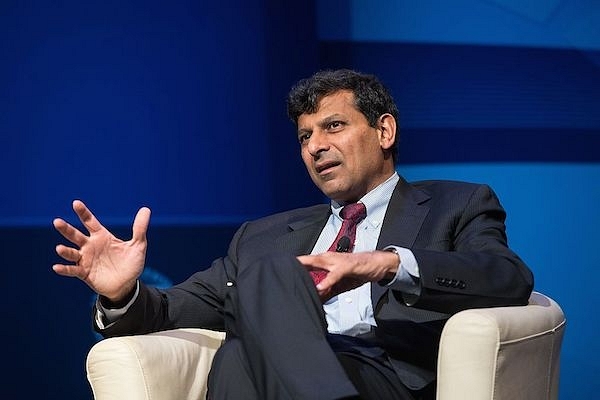Economy
Rajan Has Got An Entire Country Interested In ‘The Dismal Science’
- Whatever be Rajan’s achievements or missteps, he certainly generated debate among Indians in matters of the so-called dismal science—economics

Photo Credits: Nicholas Kamm/Getty Images
The stock markets closed higher on Monday, and the rupee has marginally moved. So the R3XIT apocalypse did not happen, which is as much indicative of the maturity of the markets as it is of the strength of the Reserve Bank of India (RBI) as an institution. Governors will keep changing, yet our faith in the central bank should remain unshakeable, with each incumbent enhancing the central bank’s stature.
Dr Raghuram Rajan will be missed. He has left his mark in many ways. Let us look at the RBI’s performance under his stewardship, under each of its stated primary functions.
Monetary Authority
Rajan’s biggest contribution has been to remove the ambiguity in monetary policy making. It was amply clear to anyone who noticed that targeting consumer price index (CPI) inflation was the RBI’s single focus in its repo rate decisions. Growth was left to the government, but this was not solely the RBI’s decision. It is the government that signed a monetary policy framework agreement with the RBI, giving the central bank this mandate. Surely Rajan cannot be blamed for keeping the repo rate high to follow his mandate? In fact, while many commentators criticised him for this, the government was more understanding of his monetary policy stance.
Rajan certainly achieved control over the inflation demon. Some economists argue that food inflation (currently our main problem) is supply-driven, but it is a fact that Rajan stymied inflationary expectations that can exacerbate supply-led price shocks. The plummeting oil and commodity prices (globally) certainly helped inflation control. No less was the contribution from the government, that did a great job with food stocks and minimum support price policies. It remained steadfast about fiscal consolidation in the face of intense criticism, for cutting social expenditure.
Rajan also awarded licenses to two new banks (already an active process) and several payments and small finance banks. The last two are bold experiments and only time will tell whether they lead to financial inclusion. The new banks are supply measures to complement the government’s ‘Jan Dhan Yojana’ that is generating demand for bank accounts. Outside of the banking sector, Rajan maintained continuity with the past by refusing to cast off bond market regulation and public debt management.
Manager of Foreign Exchange
We are in a healthy position now, with around $360 billion of foreign exchange reserves. This stability, of course, is the result of both RBI policies as well as the government’s actions towards making India a more favoured investment destination. The rupee has stabilised as a result of healthy capital flows and fast disappearing current account deficit.
The Issuer of Currency
The plastic note experiments started by the previous governor, Dr D Subbarao, did not take off under Rajan. Non-availability of small denominations remains a challenge in large parts of the country. Customers and small business owners continue to fight over small change while stores and tollgate operators still offer useless candies as change.
Developmental Role and Related Functions (banker to government and banks):
There was broad continuity with previous regimes.
Clearly, economic outcomes are the combinations of many factors – policies of different agencies (including the government) as well as good luck. Certainly, the RBI’s policies have helped to strengthen India’s macro fundamentals.
Rajan played a key role in formulating these policies, but from my brief stint with the RBI in a previous avatar (before becoming an academic), I can say that policies are shaped by a team of senior executives helped by inputs from different departments.
For instance, Rajan is credited with stabilising the rupee immediately after taking charge in September 2013. But surely the dollar swap window was being worked out, even before he took charge. Of course, the governor has to take the final call and be responsible for the consequences. In fact, it would be to Rajan’s credit if he has strengthened the RBI such that the good work continues even after he leaves. The monetary policy committee that he has helped institutionalise will provide credibility to future repo rate decisions.
However, unlike regulators before him, Rajan, being a public intellectual, freely expressed his views on non-economic issues including politically sensitive ones. His articulation of opinions came at a time when the government was fighting a battle of perception on a daily basis, and a top official’s apparent disregard for its sensibilities must have hurt.
Rajan is certainly leaving large shoes to fill. He caught the public imagination like few have. Rajan has generated debate among Indians in matters of the so-called dismal science, that is economics. Everyone around now seems to have an opinion on CPI inflation, exchange rate and stressed bank assets!
Credit can go to Prime Minister Narendra Modi for reviving national interest in public policy when he ran the 2014 election campaign on a development agenda. Rajan has enlivened banking and finance. He is going to leave behind a country much more curious and aware of economic matters, along with an institution that can steer the course. That is a good thing.
Introducing ElectionsHQ + 50 Ground Reports Project
The 2024 elections might seem easy to guess, but there are some important questions that shouldn't be missed.
Do freebies still sway voters? Do people prioritise infrastructure when voting? How will Punjab vote?
The answers to these questions provide great insights into where we, as a country, are headed in the years to come.
Swarajya is starting a project with an aim to do 50 solid ground stories and a smart commentary service on WhatsApp, a one-of-a-kind. We'd love your support during this election season.
Click below to contribute.
Latest